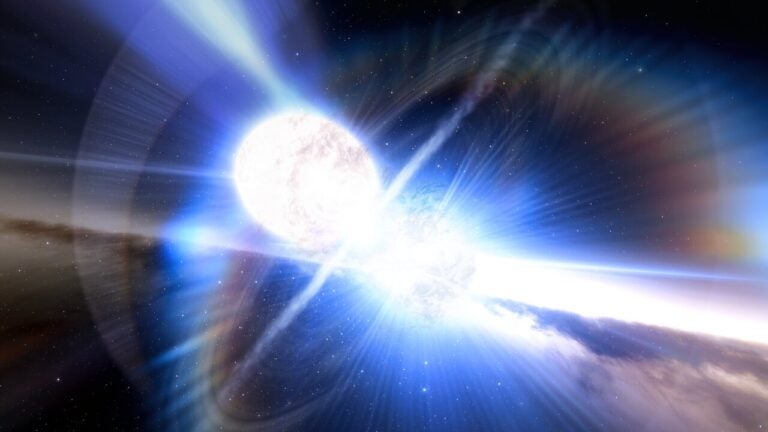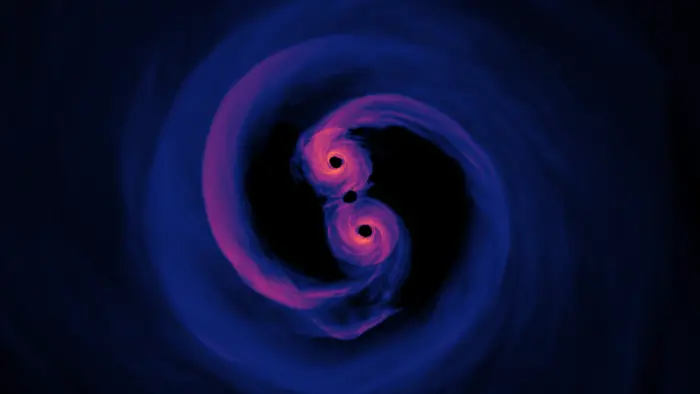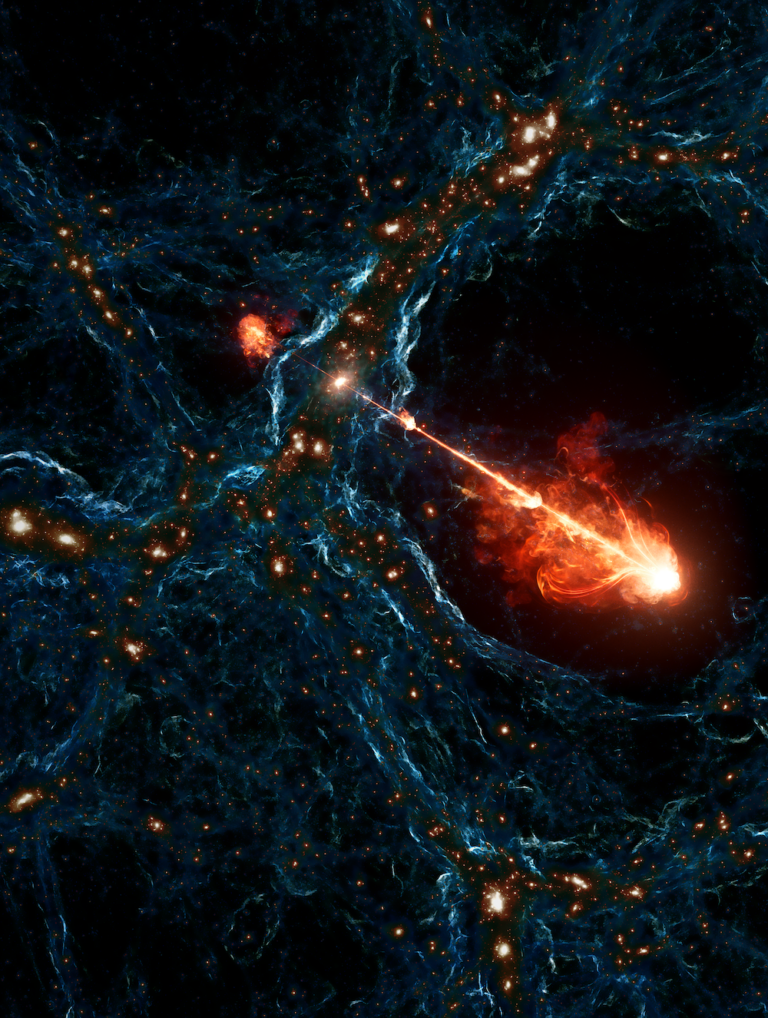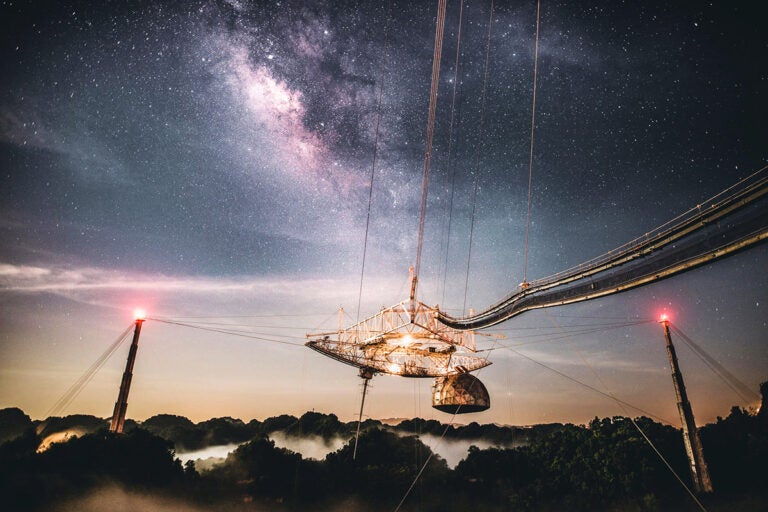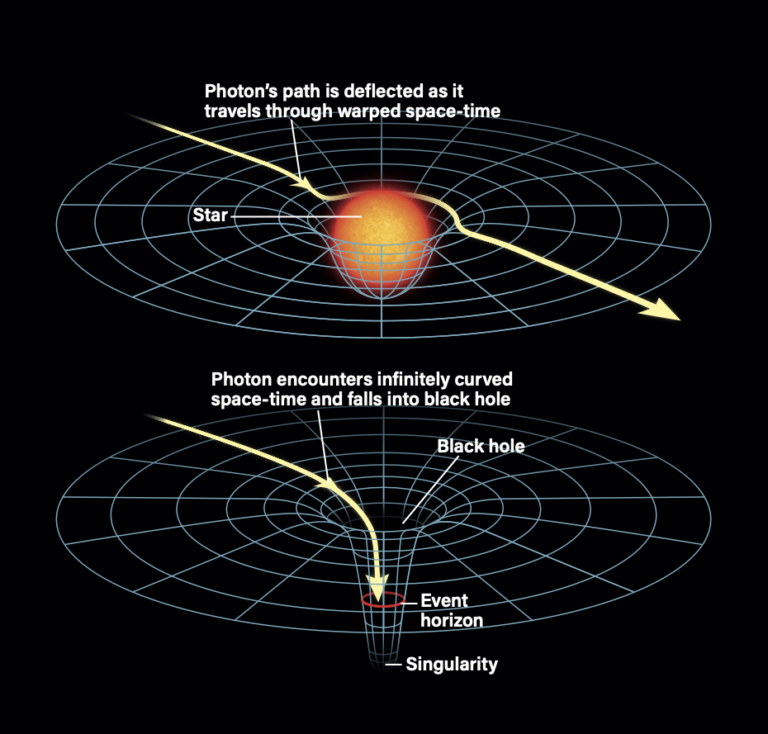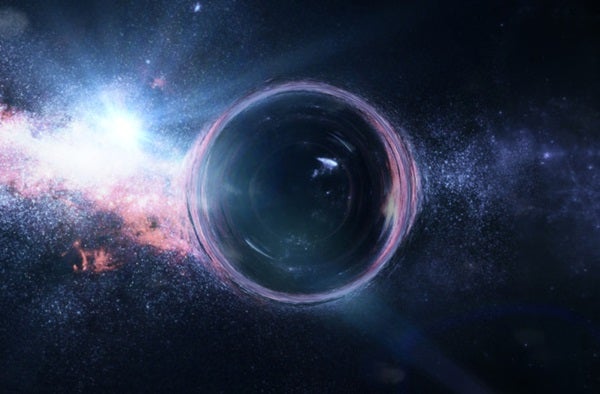
Do black holes have centers? If so, what’s going on in there?
Richard Livitski
Seal Beach, California
Einstein spent 10 years wrestling with three fundamental concepts in physics: acceleration, the special theory of relativity, and the gravitational force. This heroic effort culminated in 1915 with the general theory of relativity, an elegant set of equations relating the curvature of space-time to the matter moving around in it.
Though simple to write down, finding solutions to these equations has intrigued physicists and mathematicians ever since. To tackle any set of equations relating a physical system that evolves with time, a good start is to make assumptions that simplify things. Barely a month after Einstein’s publication, Karl Schwarzschild discovered one of the simplest solutions. His description relating a compact spherically symmetric mass that doesn’t change with time to the curvature of space-time surrounding it introduced us to what we now call a black hole.
Initially this solution was dismissed by many because it predicted an unusual situation: All matter in a black hole is concentrated into a central point of infinite density and infinitesimally small size — a singularity. Singularities make physicists rather uncomfortable.
Having established what’s at the center, what about the empty space immediately surrounding the singularity? Consider the trajectory of a spaceship falling into a black hole. From the point of view of a distant observer, the ship will accelerate and quickly reach the central singularity, but on the way it passes a point of no return: the event horizon. The closer to the central mass, the stronger the force of attraction; inside the event horizon the force is so strong — equivalently, the space-time is so curved — that no engine is powerful enough to overcome gravity and drive the ship outward. In fact, inside this radius, not even light can move fast enough to escape the attraction of the singularity. Just outside the event horizon, ships still travel on unusual paths, but at least they can return home.
The two problems keeping physicists up at night are 1) that our understanding of quantum mechanics makes the idea of a singularity untenable, and 2) the event horizon shields us from measuring what happens inside a black hole. These issues bring us to the cutting edge of theoretical physics: bridging general relativity and the quantum realm; reconciling the event horizons of black holes with the laws of thermodynamics; and even speculating about wormholes, where the center of a black hole is a pathway rather than a singularly unfortunate dead end.
Mark Avara
Astrophysicist, Institute of Astronomy, Cambridge, University of Cambridge, U.K.


